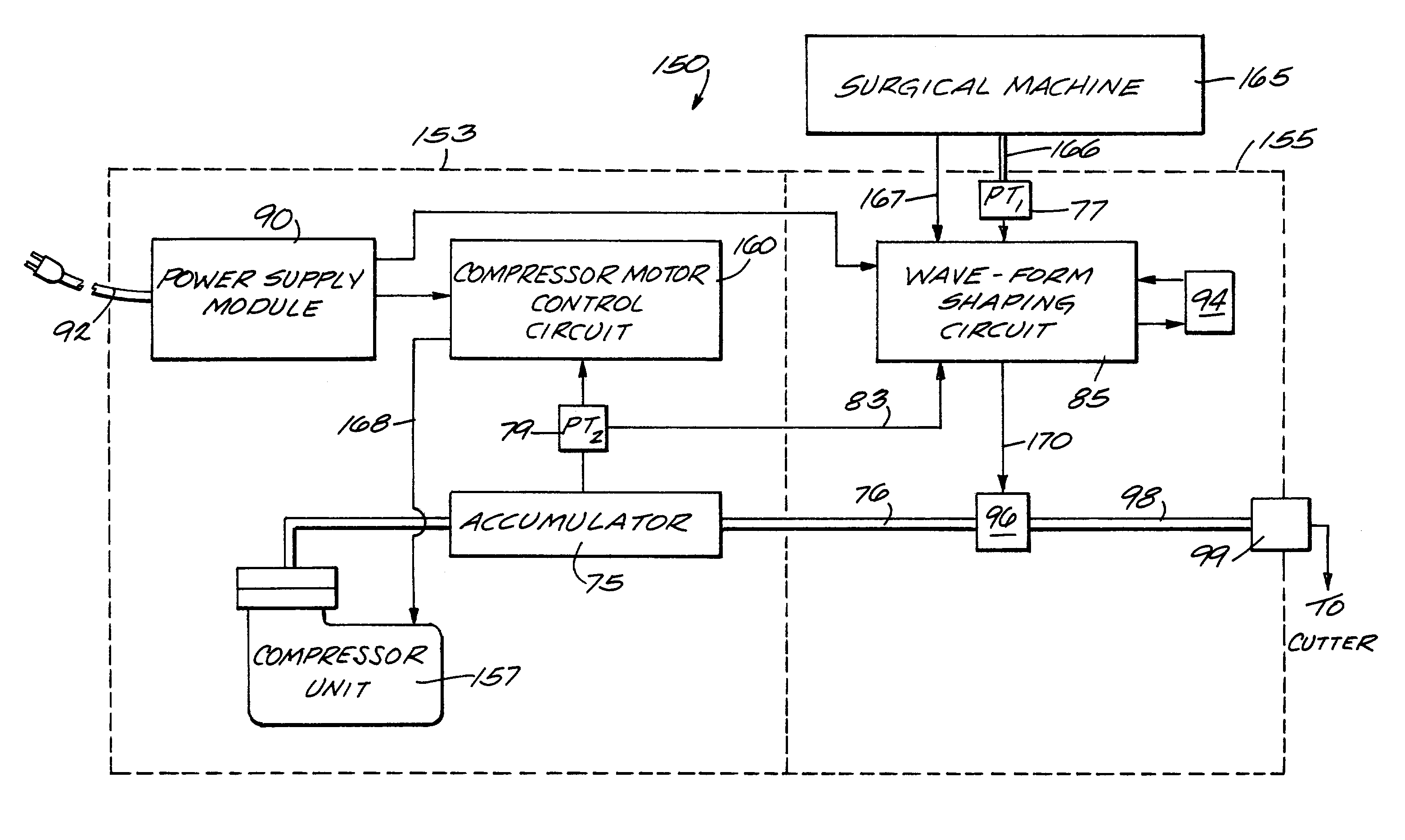High-speed vitreous cutting system
a cutting system and high-speed technology, applied in the field of devices, can solve the problems of high cutting rate, hazardous removal of vitreous close to the retina, and limited pneumatic pressure at the handpiece end of the tubing,
- Summary
- Abstract
- Description
- Claims
- Application Information
AI Technical Summary
Benefits of technology
Problems solved by technology
Method used
Image
Examples
Embodiment Construction
[0039]A generic high-speed vitreous cutting system 10 is shown FIG. 1. The system 10 includes an actuator 12 and a cutter 14 connected to the actuator through a tubing 16. The cutter is also connected through a tubing 18 to an aspiration system, which is separate from the vitreous cutting system 10. Preferably, the tubings 16 and 18 are joined as a single, twin-bore tubing. Typically, the tubing is 72″ to 84″ in length.
[0040]As best seen by reference to FIG. 2, the cutter 14 is a pneumatically driven, axial guillotine-type vitreous probe or cutter. The cutter has a generally cylindrically-shaped housing 19 designed to be held in a human hand and may be approximately 1.5″ in length. The housing 19 has a front end 20 and a rear end 22. The rear end 22 has a connector 23, designed to receive one end of the tubing 16, and a center opening 24. Inside the housing 19 is a flexible diaphragm / piston 25 having a first side 26 and a second side 27. The first side 26 and rear end 22 define a re...
PUM
 Login to View More
Login to View More Abstract
Description
Claims
Application Information
 Login to View More
Login to View More - R&D
- Intellectual Property
- Life Sciences
- Materials
- Tech Scout
- Unparalleled Data Quality
- Higher Quality Content
- 60% Fewer Hallucinations
Browse by: Latest US Patents, China's latest patents, Technical Efficacy Thesaurus, Application Domain, Technology Topic, Popular Technical Reports.
© 2025 PatSnap. All rights reserved.Legal|Privacy policy|Modern Slavery Act Transparency Statement|Sitemap|About US| Contact US: help@patsnap.com



